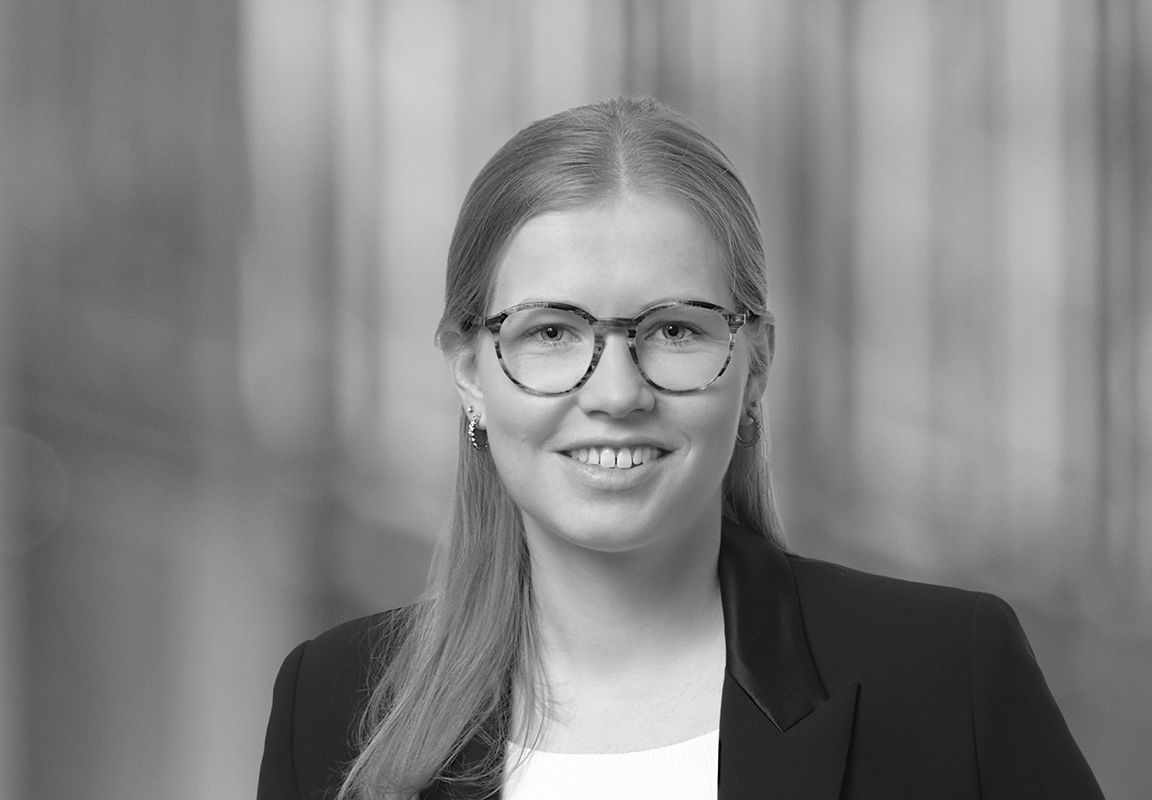
German Energy Transition - The impact of future electricity network tariff regulation
6 min read
On 12 May 2025, the German energy regulator published a discussion paper for the revision of the framework for the electricity network tariff system (Diskussionspapier für die Rahmenfestlegung der Allgemeinen Netzentgeltsystematik Strom, "AgNeS").1 AgNeS is intended to serve as a basis for discussion and suggests changes to the current network tariff system. The feedback period is open until 30 June 2025.
Background
On 2 September 2021, the European Court of Justice "ECJ") ruled that parts of the German legislation on Energy Network Regulation violate EU law, because its detailed rules unduly impair the regulator's independence of decision making.2 It now is the sole responsibility of the Federal Network Agency ("Bundesnetzagentur") to independently determine the conditions for network operation, including tariffs and their methodologies. Therefore, the Bundesnetzagentur considers fundamental changes to the existing 20-year-old network tariff regulation.
AgNeS
In AgNeS, the Bundesnetzagentur analyses the current network tariff system and concludes that it does not sufficiently meet the objectives set out in national and EU legislation, i.e., cost orientation, feasibility, financial participation and incentive function (pp. 15 et seqq.). With AgNeS, it now proposes to amend the current regime by including feed-in suppliers, modifying network tariff components, introducing dynamic network tariffs, federally harmonizsing network tariffs, introducing storage tariffs, merging network and transformer levels for cost allocation, and introducing a bidirectional cost allocation. Some of these amendments would have a significant impact on future investments in energy transition projects as they alter the economic viability of assets such as renewable energy generation or battery energy storage system projects.
Network tariffs for feed-in suppliers
AgNeS includes multiple options to for the first time ever in the German electricity market implement feed-in tariffs, claiming this is justified by the growing number of renewable energy plants and the associated need for network expansion (see pp. 25 et seqq.).
One option is the equal distribution of the network costs between the feed-in and withdrawal of electricity. Under this option, the total amount to be borne by feed-in suppliers in 2025 would amount to more than EUR 16 billion. The second option is to shift the costs of the network integration of renewables to the suppliers. This cost amounts to EUR 2.4 billion in 2025. A third option is to pass on at least part of the costs for additional services (e.g., redispatch, network reserve, balancing energy) to suppliers, which would amount to up to EUR 7.3 billion in 2025.
The billing of the feed-in tariffs could either be tied to the amount of energy fed into the network (Arbeitspreis), the peak load fed into the network or the installed generation capacity (Leistungspreis), the agreed network connection capacity (Kapazitätspreis), or a fixed annual base rate per network connection (Grundpreis).
The Bundesnetzagentur also considers the introduction of a regulated mandatory building cost subsidy for network connection and network connection expansion of feed-in suppliers.
Network tariff components: Basic price and capacity price
Regardless of the extension of network tariffs to feed-in suppliers, the Bundesnetzagentur is discussing a modification to the tariffs price components (pp. 30 et seqq.). Currently, the network tariffs for electricity are based on a consumption price component (Arbeitspreis) and a peak load-based price component (Leistungspreis).
AgNeS suggests adding a mandatory base price for the network usage. The aim is to partially decouple the network tariffs for structural network costs from the consumption, as is already practiced on the low-voltage level in Germany.
Another proposition is to replace the peak load-based price component with a network connection capacity-based price component (Kapazitätspreis). Such a capacity price reflects the capacity-dependent network costs more accurately and prevents inflationary provisional capacity reservation for new projects.
Dynamic network tariffs
While network tariffs are currently being determined annually by the network operators, the Bundesnetzagentur considers to dynamize at least parts of it (pp. 35 et seq.).
Generally, the withdrawal of electricity would be temporarily and locally exempt from tariffs where additional withdrawal is necessary for network stability or where no network congestions are imminent. Therefore, network-friendly demand side response could be incentivizsed. The simplest option presented would be to reduce network tariffs at certain peak times, especially in the evenings.
Federally harmonized network tariffs
Currently, each German distribution system operators ("DSO") determines individual network tariffs, dependent of the respective localities. For the transmission system operators ("TSO"), the network tariffs were harmonizsed in 2023. The Bundesnetzagentur now suggests harmonizsing the network tariffs on all network levels to promote an equal distribution of the systemic costs. However, the Bundesnetzagentur understands such harmonizsation would require immense bureaucratic efforts and may reduce efficiency efforts by the individual DSOs (pp. 39 et seqq.).
Storage tariffs
Electricity storage systems are not yet recognizsed as a separate role in the electricity value chain and thus are still considered both a consumer and a supplier of electricity under German law3. Most storage systems if commissioned by 31 December 2028 are exempt from network tariffs for electricity procurement for 20 years.4 Questions remain as to how storage facilities would be included in network tariffs for feed-in suppliers. In any case, the Bundesnetzagentur intends to adopt a tariff regime respecting storage systems' special role (pp. 43 et seqq.).
The Bundesnetzagentur is not inclined to grant total exemption from network tariffs. However, it recognizses the need for network tariffs that allow electricity storage systems to continue arbitrage. For arbitrage, the network tariffs' exacerbation on profitable price spreads must be minimizsed. The network-friendly installation of new storage systems may be incentivizsed by discounts for a network-friendly site location. Another option are standardizsed flexible network connection agreements which grant flexible discounts on the consumption price (Arbeitspreis) for network-friendly operation, e.g. a mandated feed-in and withdrawal in case of network congestions.
These considerations do not concern storage systems at a low-voltage level. Those are already granted up to 60% discount from the network charges if the storage system allows the DSO to intervene in its electricity consumption for the benefit of the network.5 Similarly, special regulation are is planned for industrial storage system installed behind the network connection point.6
Merger of network and transformer levels
Currently, the costs for the higher network levels are largely passed to the lower network levels.7 Thus, the network tariffs at lower network levels tend to be higher. However, the effects of the energy transition could lead to a reversal in this situation in which the network tariffs in the lower network levels sink below the network tariffs in the upper network levels. This anomaly may incentive counter-productive network connection efforts, like connecting a project to a network level which is too low for the demand. To counter this trend, Bundesnetzagentur proposes to merge network and transformer levels so that the anomalies are prevented (p. 48).
Bidirectional cost allocation between network levels
AgNeS proposes tying electricity network cost allocation to the bidirectional load flows increasingly caused by renewables (p 48). This bidirectional approach could eliminate the need for separate aid for renewable integration.
What's next
AgNeS is a non-binding paper by the Bundesnetzagentur, intended to initiate an industry-wide dialogue and provide a summary of existing considerations. It is not yet possible to predict what the future network tariff regulation will look like from 2029 onwards, as the Bundesnetzagentur will only determine its approach after the feedback period. Statements to comment on AgNeS can be submitted until 30 June 2025.
1 Press release of the Bundesnetzagentur from 12 May 2025, available at https://www.bundesnetzagentur.de/SharedDocs/Pressemitteilungen/DE/2025/20250512_AgNes.html (last accessed 22 May 2025).
2 ECJ, 2 September 2021 – C-718/18; for further information please refer to our Client Alert on the “European Court of Justice on Independence of German Energy Regulator”, available at: https://www.whitecase.com/insight-alert/european-court-justice-independence-german-energy-regulator (last accessed 22 May 2025).
3 Federal Court of Justice (Bundesgerichtshof), 17 November 2009 – EnVR 56/08.
4 See: Section 118 para. 6 of the Energy Industry Act (Energiewirtschaftsgesetz).
5 Decisions of the Bundesnetzagentur BK6-22-300 and BK8-22/010-A.
6 See: Decision procedure of the Bundesnetzagentur BK4-24-027.
7 See: Section 14 of the Electricity Network Tariff Ordinance (Stromnetzentgeltverordnung).
White & Case means the international legal practice comprising White & Case LLP, a New York State registered limited liability partnership, White & Case LLP, a limited liability partnership incorporated under English law and all other affiliated partnerships, companies and entities.
This article is prepared for the general information of interested persons. It is not, and does not attempt to be, comprehensive in nature. Due to the general nature of its content, it should not be regarded as legal advice.
© 2025 White & Case LLP



